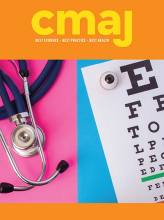It has never been easier in human history to find and share information about health and medicine. But much of the information found on the Internet and shared on social media is inaccurate and potentially dangerous. As more people seek health content online, it will become increasingly important for medical researchers and practitioners to find effective ways of steering the public toward evidence-based content and away from myths and pseudoscience.
Viral misinformation has become a threat to public health. Unfounded fears about vaccines have resulted in the re-emergence of preventable diseases. Purveyors of naturopathy and homeopathy have huge audiences on social media, and often discourage their followers from seeking medical care for serious illnesses. Fad diets with unhealthy adverse effects, unproven wellness products hawked by celebrities, appeals to opinion and emotion over facts and reason — all of these proliferate online like bacteria on agar.
What can science and medicine do to contain the threat of health misinformation? Throwing more facts at the problem, unfortunately, is not the answer. People who study the growing disregard for evidence in society suggest this is more a matter of human psychology than scientific literacy. No matter how much contrary evidence they encounter, people tend to cling to long-held health myths. Many social media users avoid sources of information that challenge their views, sticking to communities in which their beliefs are confirmed.1
Nor is it constructive for medical experts to talk down to people whose beliefs fall outside the consensus within the scientific community. Well-known physicians and scientists with large numbers of followers on social media frequently dismiss views they deem unworthy of respect, with disparaging remarks and putdowns. As a result, people who already have misgivings about modern medicine become further alienated. Humility, compassion and friendly persuasion would perhaps make for a more productive approach to changing minds than combative superiority.
It is beyond the scope of medicine to fix the Internet, but tech-savvy medical experts can assist in the fight against misinformation. They can lend their expertise to technology companies and help develop better methods of weeding out low-quality health content and promoting medical knowledge based on scientific data. The medical community can also experiment with unconventional ways of disseminating accurate health information.
One new approach that has shown promise is contacting social media influencers and asking them to share useful medical content with their followers.2 This can be a more productive means of reaching a skeptical audience than having medical experts use traditional channels of communication, which usually go no further than likeminded peers. The goal of generating medical knowledge, after all, is to improve human health, not receive kudos from colleagues.
Likewise, public health organizations need to improve their social media presence to help Internet users find accurate health information. A study of digital pandemics of public health misinformation found that in online discussions about a sample scientific publication, half of social media users encountered negative and nonempirical content unrelated to the original paper.3 The authors refer to this problem as “social diffusion,” and concluded that public health organizations must employ new social media strategies to improve their communication of public health information.
At the clinical level, doctors attempting to change the minds of patients who cling to potentially harmful health myths and misconceptions will need patience. People are unlikely to abandon long-held beliefs overnight, especially if it means abandoning online communities that have become an important part of their lives. A meta-analysis of the factors underlying effective messages to counter attitudes based on misinformation found that these beliefs are persistent in the face of debunking.4 Success rates improve, however, if people are encouraged to scrutinize their information sources, and if the debunking message includes new information that provides additional context rather than merely labelling a patient’s belief as incorrect.
The Internet and social media aren’t going anywhere, and patients will continue to seek and share health information online. Misinformation will persist as well. Helping patients live healthier lives includes helping them find better health information.
Footnotes
Competing interests: See www.cmaj.ca/site/misc/cmaj_staff.xhtml











